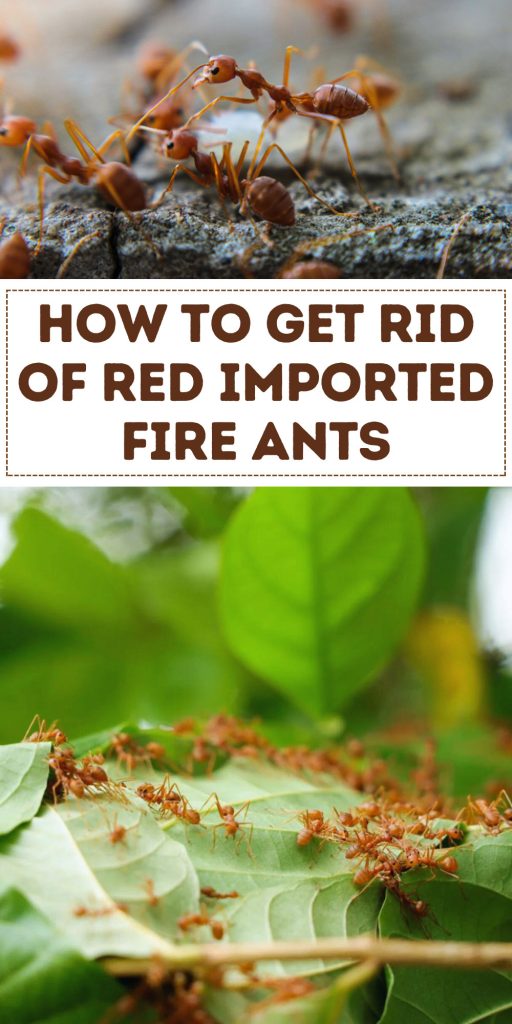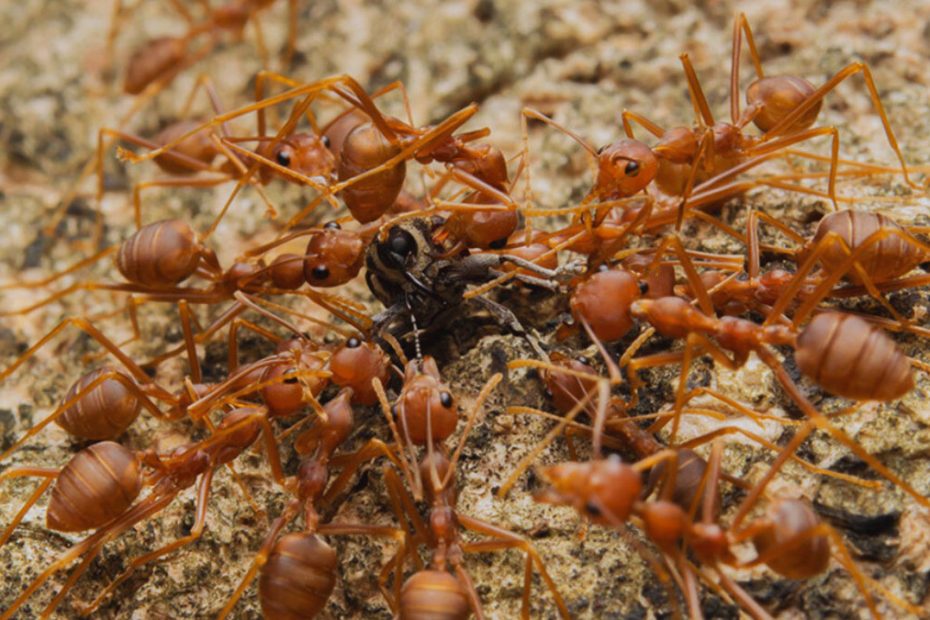Dealing with red imported fire ants can be a nightmare. These invasive pests not only damage your lawn but also pose a serious threat to your family and pets with their painful stings. If you’re tired of seeing these unwelcome guests in your yard, it’s time to take action.
Understanding how to effectively eliminate red imported fire ants requires a strategic approach. From identifying their nests to choosing the right treatment, every step is crucial. In this guide, you’ll learn proven methods to rid your property of these pesky invaders and reclaim your outdoor space.
Key Takeaways
- Identification is Key: Recognize red imported fire ants (RIFAs) by their reddish-brown color, size variability, and aggressive behavior to effectively target infestations.
- Understanding Risks: RIFAs pose significant dangers, including painful stings, lawn damage, threats to pets, and potential electrical interference.
- Prevention Strategies: Maintain your yard with regular mowing, weed control, and proper food and waste storage to create an environment hostile to RIFAs.
- Natural Remedies: Utilize eco-friendly options like diatomaceous earth, essential oils, and beneficial nematodes to manage RIFA populations sustainably.
- Chemical Solutions: Choose appropriate insecticides, apply them safely, and monitor their effectiveness to ensure thorough control of RIFAs.
- Professional Help: Consider professional pest control services for extensive infestations, severe allergic reactions, or if DIY methods fail, ensuring comprehensive and lasting elimination.

Understanding Red Imported Fire Ants
Red imported fire ants (RIFAs) are invasive pests known for their aggressive behavior and painful stings. They’re native to South America but have spread widely due to their adaptability.
Identifying Red Imported Fire Ants
Proper identification of RIFAs is crucial to address infestations effectively. RIFAs can be recognized by their distinct characteristics:
- Color: RIFAs display a reddish-brown color, varying from reddish to dark brown, with a shiny exoskeleton.
- Size: They vary in size, ranging from 1/8 to 1/4 inch in length. Both small and large workers can coexist in the same colony.
- Antennae: Consisting of 10 segments, with a two-segmented club at the end.
- Behavior: RIFAs display aggressive behavior when disturbed, swarming out of their nests to sting intruders.
These traits help differentiate RIFAs from other ant species and help targeted management.
The Risks and Dangers They Pose
The presence of RIFAs poses significant risks:
- Painful Stings: RIFAs can sting multiple times. Their stings cause intense pain and can lead to pustules, allergic reactions, or even anaphylaxis in sensitive individuals.
- Damage to Lawns: RIFAs build large mounds, disrupting lawns and landscapes. They can also damage crops and young plants.
- Threat to Household Pets: Pets can suffer from multiple stings, leading to severe reactions or significant distress.
- Electrical Interference: RIFAs are drawn to electrical equipment and can damage wiring, causing malfunctions or outages.
Understanding these risks underscores the importance of prompt and effective control measures against RIFAs.
By recognizing the key characteristics and understanding the dangers posed by RIFAs, you can carry out the right strategies to safeguard your property from these invasive pests.
Prevention Tips
Preventing red imported fire ants (RIFAs) requires proactive measures and vigilance. By maintaining your yard and ensuring proper food and waste storage, you can create an inhospitable environment for these pests.
Yard Maintenance Techniques
Keep your yard well-maintained to reduce the likelihood of RIFA infestations. Carry out these techniques:
- Regular Mowing: Mow your lawn consistently to prevent tall grass, which provides ideal nesting sites for RIFAs.
- Weed Control: Remove weeds and unwanted vegetation promptly. Dense plant growth can shelter RIFAs.
- Debris Removal: Clear away leaf litter, wood piles, and other debris that can offer ants shelter and nesting spots.
- Soil Aeration: Aerate your soil to improve drainage. RIFAs prefer moist soil, so improved drainage can deter them.
- Mulching: Use mulching sparingly and avoid placing it too close to structures. Mulch can attract RIFAs by providing a moist environment.
Proper Storage of Food and Waste
Store food and waste correctly to reduce the chances of attracting RIFAs. Follow these guidelines:
- Seal Food Containers: Use airtight containers for storing food indoors and outdoors. Open food sources attract ants.
- Pet Food Management: Only put out pet food during feeding times, and store it in sealed containers afterward.
- Garbage Storage: Keep garbage bins tightly closed. Regularly clean bins to remove food residue that attracts pests.
- Compost Management: Turn compost piles frequently and cover them to minimize odors that attract RIFAs.
- Outdoor Cleanliness: Clean up spills and crumbs promptly during outdoor activities.
By incorporating these yard maintenance techniques and proper food storage practices, you significantly reduce the likelihood of experiencing a RIFA infestation. Keep following these preventative measures consistently.
Natural Remedies
Natural remedies help to manage red imported fire ants (RIFAs) without relying on harsh chemicals. The following methods use common household items and environmentally friendly solutions to tackle these pests effectively.
Using Diatomaceous Earth
Diatomaceous earth (DE) is a natural, silica-based powder made from fossilized aquatic organisms. It dehydrates insects by absorbing the oils and fats from their exoskeletons, causing them to die.
- Choose Food-Grade DE: Ensure the DE used is food-grade, which is safe for humans and pets.
- Apply Near Nests: Sprinkle DE around the ant nests and entry points in your yard. This interrupts their paths and affects their entire colony.
- Reapply After Rain: Since DE loses effectiveness when wet, reapply it after rain to maintain its antipest properties.
Applying Essential Oils
Essential oils can act as repellents and disrupt the ants’ communication and navigation systems. Their strong scents mask pheromone trails, making it difficult for ants to reassemble.
- Peppermint Oil: Mix 10-20 drops of peppermint oil with 2 cups of water in a spray bottle. Apply this solution to the areas where you’ve spotted RIFAs.
- Citrus Oils (Lemon, Orange): Combine 10-15 drops of citrus oil with water and use it as a spray in ant-prone regions.
- Tea Tree Oil: Use a solution of tea tree oil by mixing 1-2 teaspoons with water in a spray bottle. Focus on corners and outdoor seating areas where ants are likely to gather.
Leveraging Beneficial Nematodes
Beneficial nematodes are microscopic, soil-dwelling worms that parasitize pest insects, including RIFAs. They seek out and infect ants with bacteria, eventually killing them.
- Select the Right Nematodes: Use species like Steinernema carpocapsae, effective against many soil-borne pests, including fire ants.
- Apply Properly: Release nematodes in the evening or during cooler parts of the day to prevent UV damage. Follow the instructions on the packaging for the correct dilution and application method.
- Water the Soil: Moist soil enhances nematode movement and effectiveness, so lightly water the areas where nematodes are applied.
Implementing these natural remedies enables you to control RIFAs while maintaining an eco-friendly approach. Regular application and monitoring will improve their success rates over time.
Chemical Solutions
Chemical solutions provide a potent method for getting rid of red imported fire ants. These solutions work quickly but require careful use to ensure safety and effectiveness.
Selecting the Right Insecticide
Selecting an appropriate insecticide is crucial for efficient ant control.
- Bait Formulations: Target foraging ants, which carry the poison back to the nest.
- Granular Insecticides: Suitable for lawn treatment. They work by contact and ingestion.
- Contact Insecticides: Immediate elimination on direct application but may not eradicate the entire colony.
Opt for products containing active ingredients like hydramethylnon, fipronil, or bifenthrin since these are commonly recommended by entomologists.
Safe Application Methods
Follow safety protocols when applying insecticides to protect yourself, others, and surrounding wildlife.
- Read Instructions: Always follow label instructions carefully.
- Wear Protective Gear: Use gloves, masks, and eye protection.
- Apply When Dry: Choose a dry day to ensure effectiveness and minimize runoff.
- Use Bait Stations: Contained applicators reduce the chances of exposure to non-target species.
Store insecticides safely out of reach of children and pets.
Monitoring for Effectiveness
Monitoring determines if the treatment successfully eradicates the ants.
- Check Nests: Observe the treated mounds for ant activity after a few days.
- Reapply If Necessary: A second treatment may be needed if ants are still present.
- Keep Records: Note dates of application and results to track progress.
- Inspect Surrounding Areas: Ensure no new colonies have been established nearby.
Effective monitoring ensures long-term control and helps maintain a safe, ant-free environment.
Professional Pest Control Services
Engaging professional pest control services ensures thorough and effective elimination of red imported fire ants (RIFAs). Pest control experts provide tailored solutions based on infestation severity and location.
When to Call a Professional
Professional pest control services should be considered in the following situations:
- Large Infestations: If multiple nests spread throughout your property.
- Severe Allergic Reactions: If anyone in your household experiences severe allergic reactions to ant stings.
- Repeated Failures: After trying DIY methods without significant success.
- Property Damage: If RIFAs cause noticeable damage to electrical systems or landscaping.
What to Expect from a Service
Expect the following from a professional pest control service:
- Inspection: Assess the extent of infestation and identify nest locations.
- Treatment Plan: Develop a comprehensive plan using appropriate insecticides and methods.
- Application: Apply treatments with specialized equipment for maximum effectiveness.
- Monitoring: Regular follow-ups to ensure the complete elimination of RIFAs.
Professional pest control services offer a reliable and thorough approach to managing RIFA infestations, ensuring your property remains safe and ant-free.
Conclusion
Taking control of red imported fire ants requires a well-rounded strategy. By understanding their behavior and risks, you can carry out effective prevention and treatment methods. Regular yard maintenance and proper food storage are key to creating an inhospitable environment for these pests.
Natural remedies offer eco-friendly options, while chemical solutions provide quick results when used safely. For persistent infestations, professional pest control services ensure thorough eradication. Stay vigilant by monitoring nests and reapplying treatments as needed. With these steps, you can protect your home and reclaim your outdoor spaces from these invasive ants.
Frequently Asked Questions
What are Red Imported Fire Ants (RIFAs)?
Red Imported Fire Ants (RIFAs) are invasive pests recognized by their reddish-brown color and varying sizes. They have distinctive antennae and are known for their aggressive behavior and painful stings.
What risks do RIFAs pose to my family and pets?
RIFAs pose significant risks, including painful stings that can lead to allergic reactions in humans, damage to lawns and crops, and potential harm to household pets due to their aggressive nature.
How can I identify a RIFA nest?
RIFA nests are usually dome-shaped mounds found in open areas like lawns, garden beds, or near building foundations. Disturbed nests reveal aggressive ants ready to defend their colony.
Are there natural ways to manage RIFAs?
Yes, natural remedies include using diatomaceous earth (DE) to dehydrate and kill ants, essential oils like peppermint and citrus to repel ants, and beneficial nematodes to parasitize and eliminate RIFAs.
What are some effective chemical treatments for RIFAs?
Effective chemical treatments include bait formulations for foraging ants, granular insecticides for lawns, and contact insecticides for immediate elimination. Products with ingredients like hydramethylnon, fipronil, or bifenthrin are recommended.
How should chemical insecticides be applied safely?
Chemical insecticides should be applied wearing protective gear and on dry days. Carefully follow product instructions to ensure safety and effectiveness.
When should I consider professional pest control services for RIFAs?
Professional pest control is recommended for large infestations, severe allergic reactions, repeated DIY failures, or noticeable property damage. Professionals offer thorough inspections, specialized treatments, and ongoing monitoring.
How can I prevent RIFAs from infesting my yard?
Preventative measures include regular yard maintenance such as mowing, weed control, debris removal, soil aeration, and proper mulch management. Sealing food containers, managing pet food, and keeping garbage bins closed also help.
How do I monitor the effectiveness of RIFA treatments?
Monitor effectiveness by checking nests for activity, reapply treatments if necessary, and keep records of all applications. Continuous observation ensures complete eradication of RIFAs.
